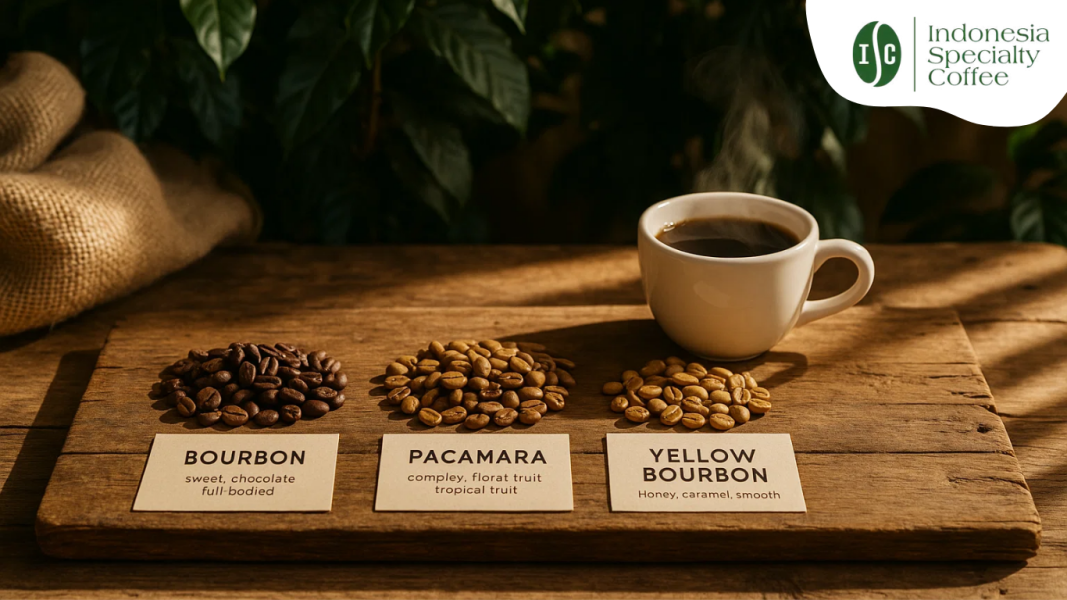Introduction: The Cup That Changed Everything
It happened on a quiet morning. You took a sip of coffee—not your usual dark roast, but something… brighter. Juicier. A hint of floral notes, maybe even tropical fruit. It didn’t taste like coffee. It tasted like discovery. That’s the magic of rare coffee varietals. These unique beans, often grown in limited quantities and under specific conditions, are reshaping how we define quality in the cup.
If you’ve ever wondered why your favorite barista geeks out over a tiny bag of Pacamara or Bourbon beans, or why certain origins command higher prices, it all boils down to varietals. In this guide, we’ll explore how rare coffee varietals elevate flavor, aroma, and acidity—and how choosing the right variety can transform your brewing ritual into an experience.
What Are Rare Coffee Varietals, and Why Do They Matter?
Coffee varietals are like grape varieties in wine. They determine how your coffee tastes, smells, and feels. Common ones like Typica or Caturra dominate global production, but it’s the rare ones—like Pacamara, Bourbon, or Yellow Bourbon—that are stealing the spotlight in specialty circles.
But what makes them special?
- Limited cultivation – Often grown at high altitudes with unique terroir
- Intense sensory profiles – Think notes of jasmine, stone fruit, or brown sugar
- Scientific attention – Studies show varietals interact with processing methods to enhance flavor, acidity, and aroma
In fact, researchers found that Bourbon and Pacamara beans processed using the Natural/Dry method scored highest for flavor and cup quality. That’s not just a statistic—it’s a sensory revolution.
The Flavor Spectrum: From Bright Acidity to Syrupy Sweetness
Have you ever tasted coffee that reminded you of blueberries? Or one that finished like dark chocolate? These flavor nuances often trace back to rare varietals and how they’re processed.
Examples of Rare Varietals and Their Signatures
- Pacamara – Bold body, floral aroma, and juicy acidity
- Yellow Bourbon – Balanced sweetness, bright citrus notes
- Mundo Novo – Smooth, with nutty undertones
- Typica – Clean but less complex compared to rare varietals
And it’s not just about the bean. Processing makes a difference too. The Washed/Wet method tends to yield a cleaner cup, while Natural/Dry methods create heavier, fruitier profiles. Want to dive deeper into flavor and brewing techniques? Explore this guide to French Press ratios for perfect balance.
The Science Behind the Sip: How Processing Boosts Varietals
You could grow the best varietal in the world, but without the right processing method, it won’t shine. That’s where the pairing magic happens.
For example:
- Bourbon + Natural/Dry method = Elevated aroma and round sweetness
- Yellow Bourbon + Washed/Wet method = Surprisingly lower in flavor and aroma scores
- Typica + Natural = Unexpected boost in flavor complexity
These combinations were backed by linear mixed models analyzing over 1300 samples globally. Ethiopia, the origin of many heirloom varietals, led the charts with the highest total cup points (85.2) thanks to varietal-processing synergy.
Interested in region-specific flavors? Sumatra coffee offers earthy, syrupy notes distinct from fruity African profiles.
Why It Matters to You—Yes, You
Are you a barista trying to up your flavor game? A home brewer chasing that perfect pour? Or a café owner deciding what to put on your menu? Understanding rare coffee varietals helps you:
- Choose beans that match your preferred brewing method
- Impress customers or friends with unexpected flavors
- Align with global trends in the third-wave coffee movement (yes, you should join it)
- Make ethical and sustainable sourcing choices
You can also check out our guide on extending coffee aroma to keep your rare varietals fresh longer.
Finding and Brewing Rare Varietals at Home
You don’t have to fly to Panama or Ethiopia to enjoy rare beans. Here’s how to start your journey:
How to Get Started:
- Buy from reputable specialty suppliers – This guide will help.
- Experiment with brewing methods – Try pour-over for delicate notes. Here’s a step-by-step pour-over tutorial.
- Store them right – Use an airtight container or read why a coffee canister is crucial.
If you’re traveling with your new beans, this travel guide might be your best friend.
Final Sip: What Rare Coffee Varietals Teach Us

Rare coffee varietals are more than a trend—they’re a tasting map to the future of coffee. They show how nature, science, and tradition come together to deliver unforgettable experiences in your cup.
So next time you brew a coffee that tastes like ripe mango or jasmine blossoms, pause and wonder: What journey did this bean take? What stories does it hold?
Better yet, share that story—with a friend, with a customer, or just with yourself. That’s the true essence of specialty coffee.
Ready to explore rare varietals yourself?
Start by checking out the most trusted specialty coffee sources and give your taste buds a global tour.
What rare coffee varietal have you tried—and how did it change your coffee experience? Let us know. Your story could inspire the next wave of coffee lovers.

